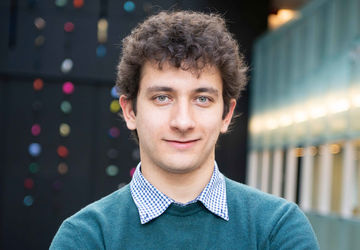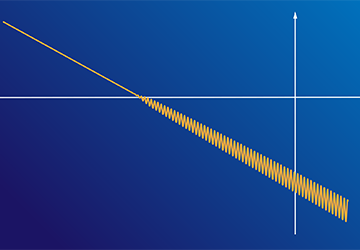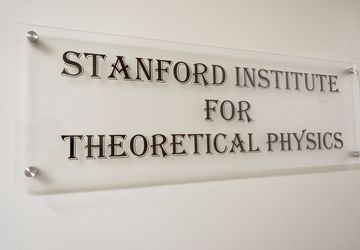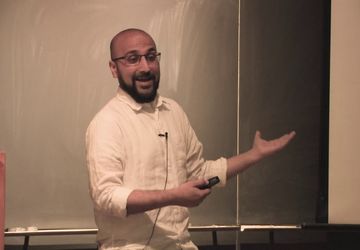Beyond The Standard Model
The Standard Model of particle physics is amazingly successful, yet it leaves many basic questions unanswered. From bizarre, unexplained parameters such as the cosmological constant, Higgs mass, or neutron electric dipole moment to the lack of explanation for observed phenomena such as dark matter and baryogenesis, there is strong evidence that the Standard Model must be extended. At SITP we have focused on finding solutions to these open problems to discover what these hints tell us about the underlying laws of physics.
Video Briefs
Dark matter self interactions can leave distinctive signatures on the properties of satellite…
I construct a landscape of vacua of string theory and study the resulting ensemble of N-axion…
Related News

Dr. Racco's research during his SITP postdoctoral appointment has been awarded the Third Prize of the 2023 Buchalter Cosmology Prize.

If the electron’s charge wasn’t perfectly round, it could reveal the existence of hidden particles. A new measurement approaches…

Peter Graham is interested in discovering the fundamental laws of nature that lie beyond the known standard model. He received an A.B./A…

Image credit: L.A. Cicero

Credit: Harrison Truong

The hierarchy problem, the puzzlingly light mass of the Higgs, is one of the largest open questions in physics beyond the Standard Model…
Related Events

Macroscopic dark matter is mostly unconstrained over a wide asteroid-mass range, where it could scatter on visible matter with geometric cross section. In this talk, I shall describe when such a 'dark asteroid' travels through a star, it produces…

I will argue that if the density of dark matter in the early universe is dominated by subhorizon, non-relativistic field modes, then there is a relatively model-independent bound on the mass of dark matter particles [m > 10^(-18) eV]. The…

Dark matter self interactions can leave distinctive signatures on the properties of satellite galaxies around Milky Way-like hosts. By analyzing a number of Milky Way dwarf galaxies, we were able to place new constraints on models of self-…

Abstract: Quantum information science seeks to exploit the collective behavior of a large quantum system to enable tasks that are impossible (or less possible!) with classical resources alone. This burgeoning field encompasses a variety…

The Cosmic Neutrino Background (CNB) is a relic of the pre-CMB era which encodes a trove of information about the early Universe and the neutrino sector dating back to when the Universe was less than a second old. In this talk, I will argue that…

Abstract: Matter-wave interferometry using ultracold atoms in free-fall is a versatile experimental technique for precision measurement of fundamental physical constants and laws. The Hogan Lab is developing the subdiscipline of large…

Models of dark sectors with a mass threshold can have important cosmological signatures. When a relativistic species becomes non-relativistic before recombination and is then depopulated in equilibrium, measurable effects on the CMB arise as…

There are a variety of experimental and astrophysical constraints on non-gravitational interactions of dark matter, both with itself and with the Standard Model. Most of these constraints assume that such interactions are short-ranged, however,…

Fast radio bursts (FRBs) are short and very bright transients visible over extragalactic distances. Their origin is still a mystery, but since the radio pulse undergoes dispersion caused by free electrons along the line of sight, FRBs can be used…